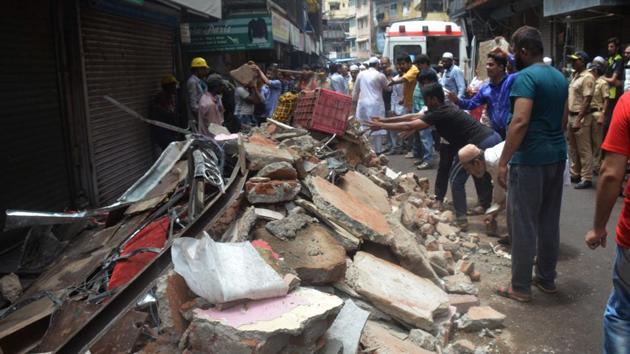Monsoon tragedies are a collapse of Mumbai’s ‘spirit’
Torrential showers all through Wednesday left Mumbai in turmoil once again. Several parts of the city were marooned; schools and colleges saw slender attendance; and commuters were badly affected, which naturally had serious consequences for businesses that depend on people who attend office, etc.
Torrential showers all through Wednesday left Mumbai in turmoil once again. Several parts of the city were marooned; schools and colleges saw slender attendance; and commuters were badly affected, which naturally had serious consequences for businesses that depend on people who attend office, etc.

Having returned from overseas that morning itself, reading Thursday’s newspapers, there was a sense of déjà vu about how the city had suffered because of another angry bout of the monsoon.
The only cheerful story (as reported by Hindustan Times) was that Mumbai’s air had become better than New York’s or London’s during this heavy wet spell!
Ranking ahead of two of the biggest cities in the developed world should ordinarily be hugely creditable. But Mumbai’s track record with air pollution is quite dismal, so chest-thumping would be misplaced. And the `victory’ becomes pyrrhic when juxtaposed with the devastation that rains cause in the city every monsoon.
This was reflected in almost every other story in Thursday’s edition on how the rains had mauled Mumbai.
The most pertinent, however, did not pertain to Wednesday’s travails, but a follow-up to the collapse of Kesarbai Building at Dongri in the second week of July, in which 13 people died and scores were injured.
Kesarbai Building was about 100 years old, dilapidated, in danger for many years and should have been demolished/reconstructed came to be well-documented. Sadly, this knowledge came only after the crash and wisdom in hindsight, unfortunately, cannot save precious lives or property, in such cases.
But that is one part of the story. The other, as this newspaper reported in the Thursday edition is that when the vigilance department of the BMC inspected 10 buildings in the same B ward as Kesarbai, all were found to have had illegal alterations done, weakening the structures considerably.
This foretells tragedy waiting to happen, and as has emerged, only because greedy house owners/tenants have connived with equally greedy civic officials to leave these buildings terribly vulnerable.
This is a serious indictment of the BMC’s accountability in taking care of life and property in Mumbai.
As I gather from several reports, senior civic officials, including the commissioner, have moved swiftly in the matter.
That is encouraging, but unless the effort is sustained – and not just episodic – and punishments prompt and severe, it will not help prevent similar calamities in the future.
In fact, the Kesarbai tragedy should compel an actionable plan by the BMC to assess all buildings beyond a certain vintage, and also where major alterations have taken place.
The wider issue, of course, is why Mumbai gets hit by catastrophes every monsoon, whether because of flooding of roads, building crashes, what have you? Unfortunately, Mumbai’s grim monsoon struggles have become a farcical media spectacle, particularly on TV, obscuring serious attempts to solve the problem.
Most stories in the media are pegged on the much-touted `Spirit’ of the city as if that is the panacea for all issues.
Of course, the ethos of Mumbai is distinctive. In the past, this essentially meant a strong work ethic, resilience and toughness in tackling hardships and a cosmopolitanism that did not exist anywhere else.
Sadly, though, the character of the city is gradually being defined by pusillanimity. In crises, there is a notorious growing willingness to accept matters as they are: almost zombie-like and without protest. This actually negates everything the resourceful, imaginative, feisty, original `Spirit of Bombay’ actually stood for.



